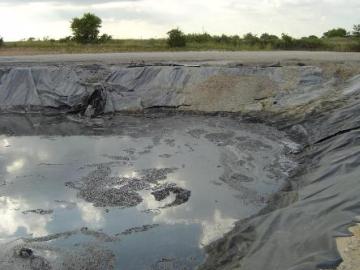Fracking may be to blame for Oklahoma earthquakes
Another swarm of earthquakes in an unusual part of the country has generated aftershocks of debate about whether the oil and gas drilling process called hydraulic fracturing, or fracking, is to blame. The early returns in Oklahoma, where a 5.6-magnitude earthquake near Sparks damaged buildings and rattled nerves on Saturday, are inconclusive
Jul 31, 202077.7K Shares2.1M Views
Another swarm of earthquakes in an unusual part of the country has generated aftershocks of debate about whether the oil and gas drilling process called hydraulic fracturing, or fracking, is to blame.
The early returns in Oklahoma, where a 5.6-magnitude earthquake near Sparks damaged buildings and rattled nerves on Saturday, are inconclusive. Much as scientists said there just isn’t enough evidence to link earthquakes this summer in Virginia in Colorado to fracking, officials over the weekend declined to connect the Oklahoma quake to the common drilling practice.
A holding pond for fracking fluids in Texas.
The process of fracking involves the high-pressure injection of water, sand and chemicals into oil and gas wells to break up tight rock and sand and free up more hydrocarbons. The fracking fluids are then stored for later use, recycled or disposed of in injection wells.
According to the Associated Press, there are 181 such injection wells in the vicinity of Saturday’s Oklahoma quake and Sunday’s aftershocks. AP also reported Oklahoma typically only experienced about 50 earthquakes a year until 2009 when that number spiked dramatically. Last year there were 1,047 small quakes in the area, prompting the installation of seismographs.
The U.S. Geological Survey (USGS)is now seeking more data on the weekend quakes in Oklahoma, a state whose panhandle region borders southeastern Colorado, where earthquakes this summer shook area residents in an area with natural gas drilling.
In August, Las Animas County, Colo., experienced a 5.3-magnitude quake, followed by a 5.8-magnitude quake in Virginia that was felt in Washington, D.C. Those quakes also prompted questions about fracking operations and injection wells.
“That process can cause very small earthquakes, but the fracking process doesn’t really, we think, induce large earthquakes,” USGS scientist Mike Blanpiedsaid in a video chat at the time. “The thing that can induce larger earthquakes is the high-pressure waste fluid injection that’s done in some places.”
In July, the Arkansas Oil and Gas Commission shut down four disposal wellsand ordered a moratorium on new injection wells after earthquake swarms last spring. USGS scientists have studied earthquakes and fracking in Coloradoin the past, without drawing any definitive conclusions.
“Just to be clear, the connection between fracking and fluid injection and earthquakes is an area of active research and really we’re only starting to learn about how those things are connected,” Blanpied told reporters in late August.
The USGS points to Coloradofor the most infamous case of an injection well being linked to an earthquake. The U.S. Army had been disposing of toxic fluids up to 12,000 feet underground at its Rocky Mountain Arsenal near Denver but had to shut down the well after a 5.5-magnitude earthquake and several aftershocks.

Paula M. Graham
Reviewer
Latest Articles
Popular Articles
